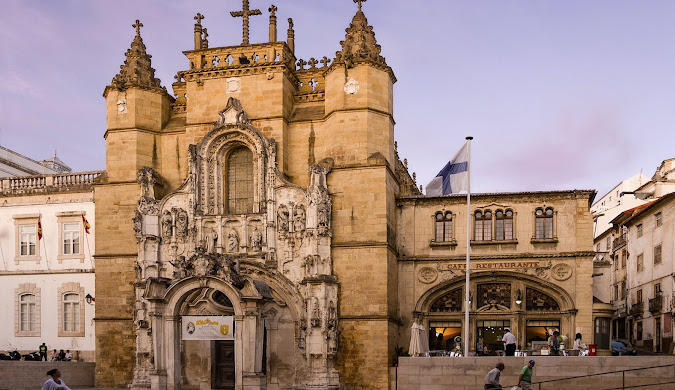Coimbra , Portugal
Coimbra Travel Guide: Explore the Heart of Portugal’s History and Academia 🎓🏰
📸 Featured Image Suggestion:
A view of Coimbra University, with its grand entrance, historic library, and the panoramic city backdrop.
(Alt text: Coimbra University, Portugal, with stunning architecture and cityscape view)
🏛️ Welcome to Coimbra – Portugal’s Historic University City
Nestled along the Mondego River, Coimbra is a city where history, academia, and culture intertwine. Known as the home of one of the oldest universities in Europe, Coimbra is a vibrant, youthful city that boasts centuries of history, cobblestone streets, and incredible architecture. Whether you're wandering through its university, exploring ancient churches, or listening to traditional Fado music, Coimbra offers a unique blend of the old and the new.
🌟 Top 6 Things to Do in Coimbra
🎓 1. Visit the University of Coimbra
A UNESCO World Heritage site, the University of Coimbra is one of the oldest in Europe, dating back to 1290. Don’t miss:
-
Joanina Library – Baroque beauty with ancient manuscripts.
-
Royal Palace of Alcáçova – The former royal residence with panoramic views.
-
University Tower – Climb to the top for stunning city views.
⛪ 2. Explore the Santa Clara-a-Velha Convent
This 15th-century convent has been partially restored and offers a glimpse into Coimbra’s past. Wander through its peaceful ruins or enjoy the exhibits in the adjacent museum.
🏰 3. Walk through the Botanical Garden of the University of Coimbra
One of the oldest and most beautiful botanical gardens in Portugal, it’s perfect for a leisurely stroll among lush greenery, fountains, and exotic plants.
🎶 4. Experience Fado de Coimbra
Unlike Lisbon’s Fado, Fado de Coimbra is a student tradition, performed in the city's cafes and historical venues. Head to Taverna de Fado to catch a live performance.
🏛️ 5. Visit the Quinta das Lágrimas
This beautiful estate is steeped in legend — the site where the tragic love story of Pedro and Inês took place. Explore the lush gardens and listen to the tale of forbidden love.
🏞️ 6. Wander through the Historic Streets of Baixa
The downtown area of Coimbra is a maze of cobbled streets, quaint cafes, and vibrant squares. Explore Praça do Comércio and Rua da Sofia to feel the city’s youthful energy.
🍽️ What to Eat in Coimbra
-
Chanfana – Traditional Portuguese stew made with goat meat, often cooked for hours in red wine
-
Leitão – Suckling pig, a specialty of the region, often served during celebrations
-
Pastéis de Santa Clara – Sweet almond pastries, named after the convent
-
Bacalhau à Coimbrã – Salted cod prepared in the local style, a perfect dish for seafood lovers
-
Pair your meal with a glass of Dão wine, one of the best reds from the region.
🧳 Coimbra Travel Tips
-
Best time to visit:
-
Spring (March–June) for the University’s celebrations and blooming gardens
-
Fall (September–November) for fewer crowds and the beautiful autumn colors
-
Avoid July–August as it can be crowded with tourists and university breaks.
-
-
Getting there:
-
From Lisbon: 2-hour drive or train ride to Coimbra
-
From Porto: 1.5-hour drive or train ride to Coimbra
-
-
Where to stay:
-
Central Coimbra: Perfect for easy access to major attractions and restaurants
-
Near the University: For a more student-oriented vibe, with a blend of history and modernity
-
Along the Mondego River: For scenic views and tranquil stays
-
📌 Quick Facts
| Feature | Detail |
|---|---|
| Language | Portuguese |
| Currency | Euro (€) |
| Distance from Lisbon | ~2 hours by car/train |
| Known For | University, Fado, historical architecture |
| Vibe | Historical, academic, youthful |
💬 Local Tip
“Coimbra is full of hidden gems, so don’t rush through the sights — take time to explore the narrow alleys, sip coffee in old bookstores, and enjoy the quiet charm of the city."


